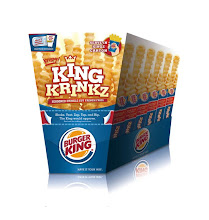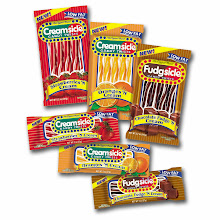
While it has often seemed that world retailing giant, UK-based Tesco, could do no wrong, the secret of the company’s success is that it fixes things when they don’t get it right.
The chief of Tesco's US operation,
Fresh & Easy, has said early market research was mistaken, and that the retailer cannot rely on its store brand without getting "down and dirty" on price. Prior to the November 2007 launch of its US operation,
Tim Mason, head of Tesco's US business, claimed the company had thoroughly studied the American market and saw a need for a new kind of store in the West Coast marketplace. Poking around in the kitchens and pantries of American homes was not enough, according to the company, since they failed to notice the huge freezers stocked with special promotions out in the garage. "There's less loyalty in the American market," says Mason. "A Brit has to hear it a few times before you accept that people make up their mind where to go each week when they check out the special offers round the kitchen table. One man in a focus group said he stopped shopping at Fresh & Easy because they no longer sent him a flier promoting the latest special offers."
The recession has slowed Tesco’s expansion plans. There are currently 113 Fresh & Easy outlets, and plans to grow that number of 200 have been scaled back "at least six months."
Outside the U.S., Tesco is making strides with its muscle and information. It,
Wal-Mart and
Carrefour, the three behemoths of the global retail industry, are going head-to-head in many markets, but especially in
China, perhaps the largest potential market for the future. Despite the recent economic downturn, Chinese disposable incomes have increased by 118% since 2000 and will double again in the next five years. Indeed, recent consumer surveys there found a majority of people didn't even think there WAS a recession! China will likely overtake Japan as the world’s second-largest economy (after the U.S.) by 2015. Some of the innovations Tesco has brought to its China operations include:
• Minibuses to bring in shoppers (only 2 people in 100 have cars)
• Products aimed at the local palate, including "donuts" covered in shredded dried pork, live fish and edible turtles and pig's faces
• "Wet" market products like freshly-slaughtered pork (Chinese shoppers feel a warm piece of meat signals freshness, as do live fish over prepared ones)
• Employees who hawk their wares in a cacophony of sounds
• Allowing shoppers to tear off packaging, which Chinese consumers feel hide stale produce and increase their cost
Tesco finds Chinese shoppers among the world's most demanding, but given the rash of food scandals recently (including melamine-tainted milk and fake eggs made from gelatin "yolks" covered by calcium carbonate "shells"), it's not surprising. Politics can play a hand in operations. French-owned Carrefour found this out after France's government appeared to support Tibetan independence prior to the Olympics: Chinese consumers boycotted the stores. Tesco's sales are robust (close to $1bn), partly from its aggressively promoting
Membercard, the equivalent of the
Clubcard familiar to U.K. shoppers. With 4.5MM members (out of 6.5MM total Tesco shoppers), the company can collect information, which it follows at its own data management firm.
Tesco is renting out the information in a database called "The Shop in China," and is increasing profitability in its 62 stores further by renting out retail space there. But Tesco’s global solution is to shape its destiny through expansion, and in China that means constructing its own shopping malls. Through a wholly-owned property subsidiary, five large Tesco malls are already under construction and an additional 15 have been green-lighted. Given the land limitations in China's urban landscape, the malls are heading upwards, with restaurants and even movie theaters planned on upper floors. Tesco plans to build houses, office complexes and even perhaps hotels alongside its new stores. It denies the projects will require large amounts of capital, insisting "for the price of a hypermarket in the U.K., we'll be able to build a shopping centre in China."
Still, some observers question the scope of Tesco's China ambitions, where Foreign Direct Investment (FDI) fell by 32.6% in January, the fourth monthly decline in a row (after increasing 110% the same time last year). Analysts also are concerned about retail saturation, with Shanghai already exceeding France on a per household basis. The French retailer,
Metro, has reduced the size of its China HQ, and at least one American company is rumored to have put further expansion plans on hold.
Mickey D's is looking to speak more Chinese, too. McDonald's plans 500 new outlets there over the next three years. In 2008, the company opened 146 restaurants in China, one of its fastest growing markets, increasing the number of outlets to 2,012 by the year's end (out of more than 30,000 worldwide). In the interim, the QSR giant posted a better-than-expected 7.1% rise in global sales for January at restaurants open at least 13 months, supported by strength in nearly all its markets. Fast-food restaurants benefited as the global downturn sent diners to lower-priced fare. McDonald's will open 175 new stores in China in 2009 and add 10,000 staff to its payroll, up from 60,000 presently, the company said earlier this month. Part of their success strategy includes conventional marketing (increased use value meals) as well as some fairly unconventional ones, including 24-hour delivery in a country where low labor costs and a huge population dovetail.
The Enemy of My Enemy Is My Friend?All is not great, though, for the Golden Arches:
PETA (People for the Ethical Treatment of Animals) is back and McDonald's is once again in their crosshairs. Nearly 10 years after declaring a truce, the animal rights group is planning a campaign around the way the QSR chain slaughters its chickens. Warning: the squeamish should read no further. The debate is over whether it's more humane to knock the birds out with an electrical shock or to cut their throats, the usual means of slaughtering in the U.S. (in Europe chickens are often gassed).
KFC is also on the list of targets by the group known for its guerrilla theater (some would say just plain guerrilla tactics). PETA has been after KFC since 2003 with its "Kentucky Fried Cruelty" campaign, urging consumers to boycott the chicken giant (apparently to little commercial effect), picketing KFC restaurants and even tossing fake blood on company execs (Dexter would be horrified). KFC claims sales actually go up during PETA protests, though their Canadian branch has agreed to begin buying gas-slaughtered birds.
Their new "McCruelty" campaign will feature rock legend
Chrissie Hynde. PETA says McDonald's and KFC have the muscle to pressure U.S. slaughterhouses into adopting the gas-killing method, though the technology is not in-place at any large commercial slaughterhouse here. And animal welfare groups don't even agree on which method is better. The
American Humane Society says either electro-shock or gas is acceptable. It is perhaps typical of PETA that it has no criticism with the often un-hygienic way the carcasses are handled after slaughter. what critics call the production line's "fecal bath" used to "wash" off the blood and offal. The soup usually ends up spreading e. Coli and salmonella contamination. But then, PETA only cares about the chickens, not the humans eating them.
For information about licensing, contact Broad Street Licensing Group (tel. 973-655-0598)

.gif)































